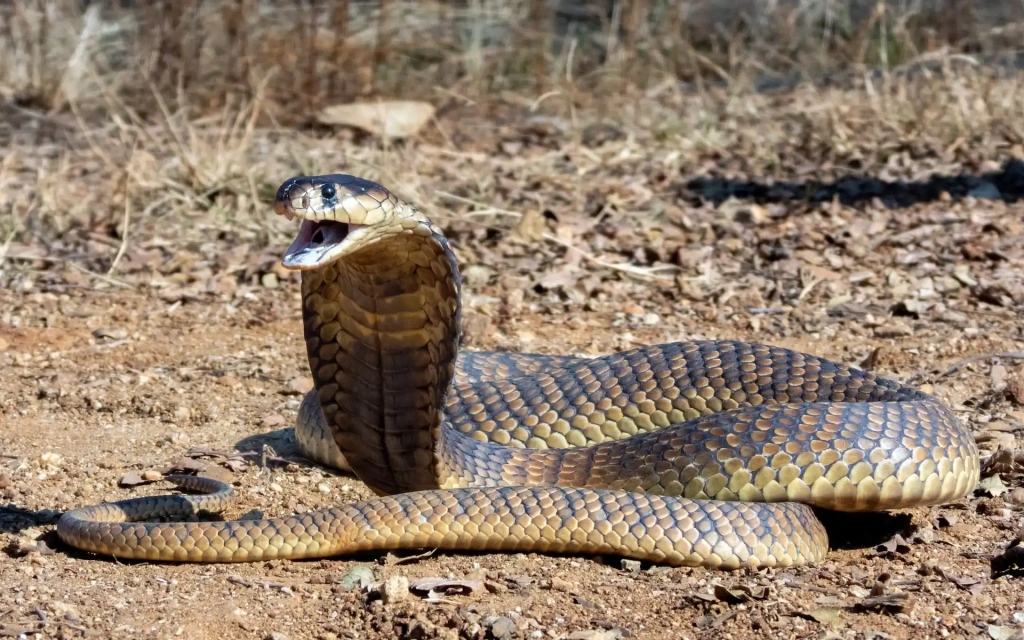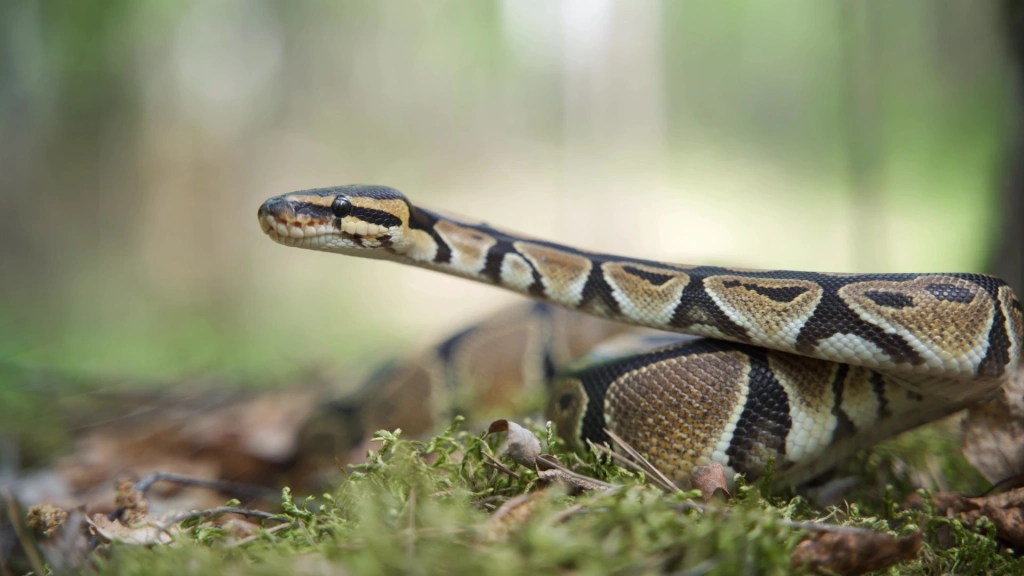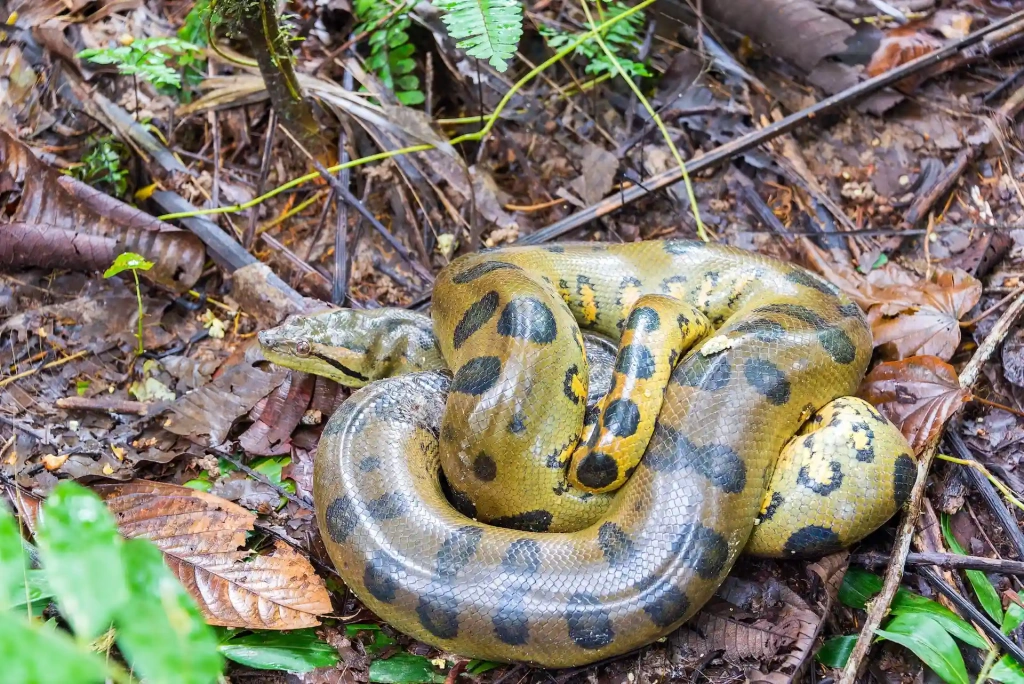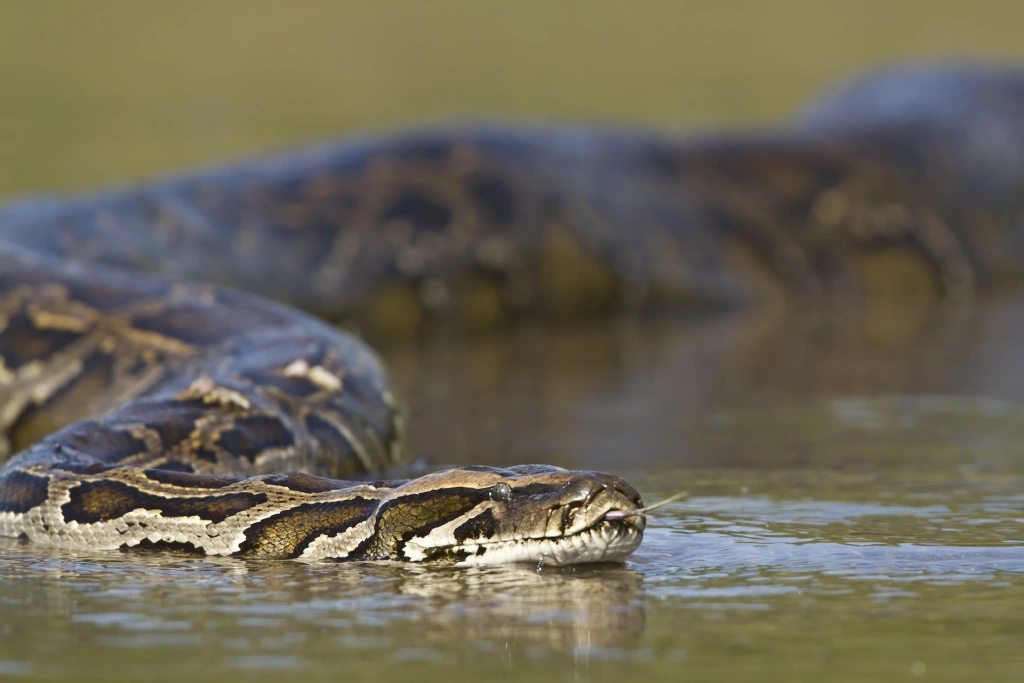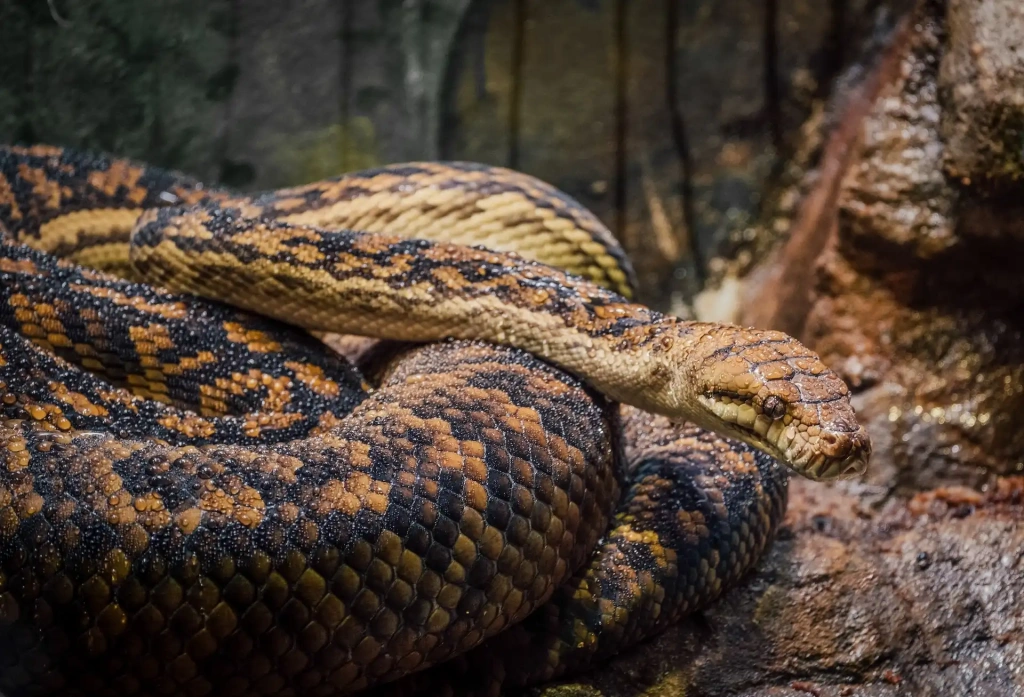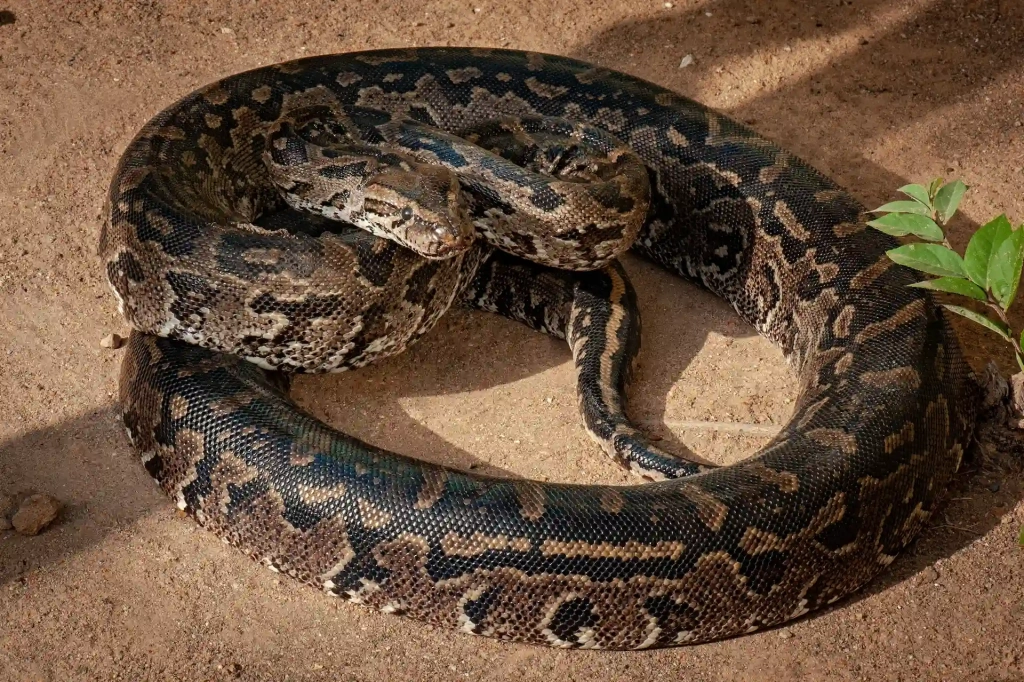Snakes are among the most unforgettable animals you can see in the wild. Today’s living snakes can reach lengths of up to 7 meters (23 ft) and weigh up to 97 kg (213 lbs). Fossil records show even more colossal serpents: some ancient species grew up to 15 meters (49 ft) and weighed around a ton (2,200 lbs). The Altezza Travel team has put together a list of the largest snakes on the planet, exploring how they hunt and just how dangerous they can be to humans.
Giant snakes: what you need to know
We spoke with Sara Ruane, curator of herpetology and director of laboratories at the Negaunee Integrative Research Center at the Field Museum of Natural History in Chicago, one of the world’s largest natural history museums. She explained which record snake sizes are officially confirmed, what factors influence reptile growth, and whether giant species might see humans as potential prey.
Which historically recorded snake length and weight records do you consider reliable, and which are disputed or mythical?
Among snakes living today, it is clear that green anacondas and reticulated pythons are the largest with respect to length, with anacondas being the heaviest in weight. Records of up to or around 30 feet are reasonable, while those much over 30 feet are more questionable. Any snake over 20 feet is seriously huge for either species.
Why do some snakes grow to gigantic sizes while others do not?
Like all animals, different snake species fill different niches. In other words, each species is performing a specific job in the environment, and there is only so much "work" for any particular type of animal. So, in any given region or location, there is probably only enough food or habitat for one species of snake to take on the job of being gigantic and eating really large prey.
In general, to get really large, reptiles need a fairly warm environment so they have the whole year to eat and grow. In more temperate regions, snakes usually hibernate during the coldest months, which means they can't get quite as large.
Does sexual dimorphism (females being larger than males) influence length and weight records?
Yes, among the largest snakes, females are usually much larger than males. This relates to the effort females must undergo physically to give birth or lay eggs. The larger they are, the more babies they can have. Male snakes only need to get big enough to eat the right prey and become sexually mature to reproduce.
You can find plenty of online stories about snakes attacking people as prey. How common are such cases?
Snakes try their absolute best to avoid contact with humans, and no snake is aggressive (i.e., approaches humans to attack purposefully). Rather, snakes are defensive, and some are more than others, meaning they are more likely to feel threatened and react. Most venomous snakes retreat or stay still when humans are around.
Encounters and bites are accidental—when a snake gets into a home and then tries to escape, or when someone steps on one. In these cases, the snake is often going to react by biting because it thinks it is in danger (and it is!).
There are, of course, some snakes that are large enough to think of humans as a prey item. This is not very common overall, but there are verified records of some pythons, like reticulated pythons, killing and consuming humans. The best way to stay safe is to give snakes a wide berth and not try to interact with them. Just observe them from a safe distance.
How is snake length measured?
There’s no single clear answer to which snake is the largest — it depends on what criteria you use. Some rankings focus on length, while others look at overall weight. For instance, the anaconda is the clear heavyweight champion, but pythons often surpass it in length. Another challenge is the reliability of sources. Scientists rely on verified measurements, while bloggers and journalists sometimes cite unconfirmed “folk records.” Finally, some lists include only living species, while others factor in prehistoric giant snake species like Titanoboa.
- To keep things clear, we used three main criteria:
- Documented and verified data
- Average sizes in the wild (to reflect typical ranges rather than rare extremes)
- A combined measure of length and weight
Extinct snake species are listed separately.
The biggest snakes in the world
There are reports of a snake measuring 8.3 meters (27 feet) and weighing 227 kilograms (500 pounds), but no definitive evidence confirms this.
10. King cobra (Ophiophagus hannah)
- Length: 3–4 m (10–13 ft)
- Weight: 6–12 kg (13–26 lbs)
- Hunting method: kills with venom
- Region: India, Southeast Asia – Indonesia, Philippines
- Habitat: tropical forests, mangrove swamps, river surroundings
The king cobra is the longest venomous snake in the world, easily recognized by its pale crossbands. Its bite delivers 400–700 milligrams of powerful neurotoxic venom, capable of paralyzing the respiratory muscles. This dose is potent enough to kill an elephant, or 20 to 30 people, within a few hours.
The king cobra’s diet consists mainly of other snakes, a rare trait among large reptiles and the reason for its scientific name, Ophiophagus, meaning “snake eater.” Unlike most species, it doesn’t lie in ambush but actively hunts its prey. Occasionally, it will also feed on lizards or rodents.
When threatened, the king cobra lifts the front third of its body to 1.5–2 meters (5–6.5 ft) high, spreads its neck ribs into a dramatic hood, and emits a deep, growl-like hiss as a warning. If the threat persists, the cobra strikes with lightning speed.
Remarkably, the king cobra is the only snake known to build a nest for its eggs. The female piles leaves and branches into a mound up to one meter (3.3 ft) high, lays 20–40 eggs inside, and stays nearby to guard them from predators. This behavior is unique among snakes.
9. Common boa (Boa constrictor)
- Length: 2.5–3 m (8–10 ft)
- Weight: 15–25 kg (33–55 lbs)
- Hunting method: constricts prey
- Region: Central and South America
- Habitat: tropical forests, savannas, foothills, edges of deserts, areas near human settlements
One of the most recognizable snakes in the world, the common boa is easily identified by the large spots along its back, which darken to reddish or burgundy toward the tail. But its fame comes from more than just its appearance.
This species thrives in a wide range of habitats, from tropical forests to dry savannas and foothills. Its evolutionary success isn’t due to size or strength, but to its adaptability, effective reproductive strategy, and omnivorous diet.
The common boa primarily feeds on small mammals, birds, and lizards. Unlike pythons, which lay eggs, it is ovoviviparous: the female carries the eggs internally, giving birth to 25–35 young after 5–8 months. This approach provides better protection for offspring and increases the species’ survival rate.
8. Cuban boa (Chilabothrus angulifer)
- Length: 2.5–4 m (8–13 ft)
- Weight: 15–30 kg (33–66 lbs)
- Hunting method: constriction (non-venomous)
- Region: Cuba and surrounding islands
- Habitat: wet forests, caves, mangrove thickets, and savannas
The Cuban boa is the biggest snake species in the Caribbean and the top terrestrial predator in Cuba.
One of its most remarkable traits is its ability to hunt bats in caves. The snake ambushes prey at cave entrances or even from the ceilings, snatching bats in mid-flight — sometimes hunting cooperatively. Its diet also includes birds (including domestic chickens), rodents, and lizards.
Its Latin name, angulifer, means “angular,” a reference to the distinctive pattern on its back. Partially arboreal, the Cuban boa moves with confidence through branches, aided by its powerful muscles and the structure of its belly scales.
7. Yellow anaconda (Eunectes notaeus)
- Length: 3–4 m (10–13 ft)
- Weight: 15–30 kg (33–66 lbs)
- Hunting method: constriction (non-venomous)
- Region: South America (Paraguay, Bolivia, Brazil, northern Argentina)
- Habitat: rivers, swamps, and marshy grasslands
Although smaller than the green anaconda, this species is incredibly strong. Its golden-yellow and olive coloration, marked with dark spots, provides excellent camouflage in murky waters and riverside vegetation.
The yellow anaconda inhabits slow-flowing rivers, streams, swamps, marshy lowlands, and lakes. It hunts from ambush in shallow water, striking prey that swims by or comes to drink, including fish, waterfowl, lizards, and small mammals. There are also recorded instances of it attacking larger animals, such as caimans and capybaras.
Like other anacondas, the yellow anaconda is ovoviviparous: the female carries her young for about six months. A typical litter includes 20–40 offspring, each measuring roughly 50–60 cm (20–24 in) at birth, already capable of swimming and hunting independently.
6. Indian python (Python molurus)
- Length: 3–4 m (10–13 ft)
- Weight: 20–40 kg (44–88 lbs)
- Hunting method: constriction (non-venomous)
- Region: South and Southeast Asia – India, Sri Lanka, Bangladesh, Thailand, Myanmar
- Habitat: tropical forests, swamps, mangrove thickets
The Indian python has pale yellow-brown coloring with large spots along its back. It is most often found near water and can remain submerged for up to 30 minutes.
This species has so-called “heat pits” on its snout: organs sensitive to the infrared radiation emitted by warm-blooded animals. These allow the python to detect prey even in complete darkness, making it a highly effective nocturnal hunter. Its diet includes small to medium-sized mammals such as rats, hares, mongooses, and monkeys, as well as domestic birds, peafowl, partridges, reptiles, and more.
The Indian python is believed to have inspired Kaa, the wise python in Rudyard Kipling’s The Jungle Book, set in central India, its natural habitat. Kipling, who was born in and traveled extensively through India, portrays Kaa as calm, slow-moving, and wise, closely matching the real temperament of this python. He even describes Kaa as a “yellowish” giant, reflecting the species’ natural coloring.
5. Amethystine python (Simalia amethistina)
- Length: 4–5 m (13–16 ft)
- Weight: 15–25 kg (33–55 lbs)
- Hunting method: constriction (non-venomous)
- Region: northeastern Australia, New Guinea, and surrounding islands
- Habitat: tropical forests, hill slopes, and shrub thickets
In sunlight, the scales of the amethystine python, also known as the Australian scrub python, shimmer with a violet-blue sheen, giving the species its name. This iridescent effect is caused by the scales' special structure, which refracts light.
A typical inhabitant of tropical rainforests and mangrove thickets, the amethystine python is one of the largest arboreal snakes. Adults often climb branches, using their strong muscles and tail for support. It usually hunts at dusk, feeding on birds, mammals, and small lizards.
Young snakes are shy and highly defensive, but as they mature, they generally become calmer while remaining alert.
4. African rock python (Python sebae)
- Length: 3–5 m (10–16 ft)
- Weight: up to 40–45 kg (88–99 lbs)
- Hunting method: constriction (non-venomous)
- Region: sub-Saharan Africa
- Habitat: savannas, forests, rivers, and swamps
The African rock python is the largest snake in Africa. It is most commonly found near rocky outcrops or water sources, where it can easily ambush prey. Python sebae’s size and strength are so impressive that it can take down small antelopes, warthogs, monkeys, young crocodiles, large birds, and even livestock.
Primarily terrestrial, this snake can also climb trees and swim when necessary, remaining underwater for extended periods. During the dry season, it often shelters in burrows or rock crevices and may enter a state of dormancy.
Like other pythons, the female exhibits strong parental care, coiling around her clutch to protect it from predators and using rhythmic muscle contractions to raise her body temperature and warm the eggs.
3. Burmese python (Python bivittatus)
- Length: 3–5 m (10–16 ft)
- Weight: 40–70 kg (88–154 lbs)
- Hunting method: constriction (non-venomous)
- Region: Southeast Asia (Myanmar, Thailand, Laos, Vietnam), as well as introduced populations in Florida, USA
- Habitat: wet tropical forests, river floodplains, swamps, and agricultural landscapes
Burmese pythons are generally calm and sluggish. In their first months, they remain in the treetops, hunting small mammals and birds. As they grow and gain weight, they shift to a terrestrial lifestyle, preying on larger animals such as raccoons, opossums, rabbits, and more. Thanks to the flexible joints in their skulls, these pythons can swallow prey roughly equal to their own mass. There are even recorded cases of them hunting small deer.
Interestingly, Burmese pythons were transported to and released into the wild in Florida, USA, where they became a major threat to the local ecosystem. Between 2003 and 2011, scientists recorded a 99.3% decline in raccoon populations, a 98.9% drop in opossums, and an 87.5% decrease in bobcats in certain areas, with rabbits disappearing entirely. Efforts to control the population have since captured over 23,000 individuals from 2012 to 2025, though mammal populations have not yet shown significant recovery.
2. Reticulated python (Malayopython reticulatus)
- Length: 4–6 m (13–20 ft)
- Weight: 30–60 kg (66–132 lbs)
- Hunting method: constriction (non-venomous)
- Region: Southeast Asia (Indonesia, Philippines, Malaysia, Myanmar, Thailand, Vietnam)
- Habitat: tropical forests and savannas
Reticulated pythons are easily recognized by their intricate mosaic pattern of yellow, brown, and black diamonds, forming a “net” that provides excellent camouflage among leaves and shadows.
These snakes are nocturnal hunters. Thanks to the flexible connection between their upper and lower jaws, they can open their mouths up to 160 degrees and swallow prey thicker than their own bodies, from birds and monkeys to small pigs and deer. While they eat, their skin and muscles stretch and their internal organs shift without interrupting blood flow. Small prey can be swallowed in minutes, while larger animals may take one to two hours. Digestion can last up to two weeks, after which the python’s body returns to its normal size.
1. Green anaconda (Eunectes murinus)
- Length: 4–5 m (13–16 ft)
- Weight: up to 70 kg (154 lbs)
- Hunting method: constriction (non-venomous)
- Region: South America (Brazil, Venezuela, Colombia)
- Habitat: tropical rivers and swamps
The green anaconda is the heaviest snake in the world and a living relic of its family, having changed very little over millions of years. Its olive-green coloration, marked with large dark spots, provides near-perfect camouflage in murky water and dense riverside vegetation.
Anacondas hunt in swamps and slow-moving rivers, moving at 8–10 km/h (5–6 mph), roughly the pace of a jogger. They don’t chase prey but ambush it, coiling around victims and constricting until breathing stops. Their diet includes capybaras, caimans, waterfowl, and fish.
The longest recorded green anaconda measured 5.21 m (17 ft) and weighed 97.5 kg (215 lbs), documented by Dr. Antonio Rivas during research in Venezuela in the 1990s. While some sources suggest lengths of 6.3–6.4 m (21 ft), these are theoretical maximums, and reports of snakes 7–10 m (23–33 ft) long remain unverified.
3 largest extinct snakes
Palaeophis colossaeus
- Length: about 9 m (30 ft)
- Weight: up to several hundred kg (rough estimate)
- Region and habitat: coastal areas and marine lagoons of Africa (around 55 million years ago)
Palaeophis belonged to an ancient group of marine snakes adapted to a semi-aquatic lifestyle. Its body was laterally flattened, aiding movement underwater. Although its coloration is unknown, it may have been dark, like modern sea snakes.
Fossilized vertebrae discovered in the 1930s in Niger helped researchers identify the largest member of the genus, Palaeophis colossaeus. In the early 2000s, re-examination of these specimens suggested the snake could reach about 9 m (30 ft) in length.
Palaeophis lived during the early Eocene, when the region of today’s Sahara was a warm marine basin. It likely fed on fish and other marine animals. Based on its vertebrae, it was a competent swimmer, though probably slower and less flexible than modern sea snakes.
Titanoboa (Titanoboa cerrejonensis)
- Length: about 12.8–14.3 m (42–47 ft)
- Weight: over 1 ton (2,200 lbs)
- Region and habitat: swampy tropical forests and river deltas in northern South America (modern-day Colombia) during the Paleocene (around 58–60 million years ago)
Titanoboa likely looked similar to a modern anaconda, but was much longer and heavier, with a body over a meter (3.3 ft) thick.
Dozens of massive vertebrae and ribs, belonging to at least 28 individuals, were discovered in the early 2000s in a coal mine in northeastern Colombia. Based on the structure of its vertebrae and teeth, scientists believe Titanoboa was a semi-aquatic predator that hunted tropical catfish and giant ancient fishes from the Osteoglossidae family.
Vasuki (Vasuki indicus)
- Length: about 11–15 m (36–49 ft)
- Weight: around 1 ton (2,200 lbs)
- Region and habitat: coastal/swampy forests and lagoons of western India (middle Eocene, around 47 million years ago)
One of the biggest snakes that ever lived, Vasuki, was closely related to modern anacondas: its broad, laterally compressed vertebrae suggest a thick, powerful body. Its skin color and pattern remain unknown.
The remains of Vasuki, a series of 27 vertebrae from an adult individual, were discovered by Indian paleontologists and described in detail in April 2024. The genus was named after the mythical serpent Vasuki from Hindu tradition.
Vasuki lived around 47 million years ago, during a period of unusually warm climate that scientists believe contributed to its enormous size. Like modern anacondas, it likely ambushed large catfish, turtles, and crocodiles near the water’s edge.
All content on Altezza Travel is created with expert insights and thorough research, in line with our Editorial Policy.
Want to know more about Tanzania adventures?
Get in touch with our team! We've explored all the top destinations across Tanzania. Our Kilimanjaro-based adventure consultants are ready to share tips and help you plan your unforgettable journey.

















